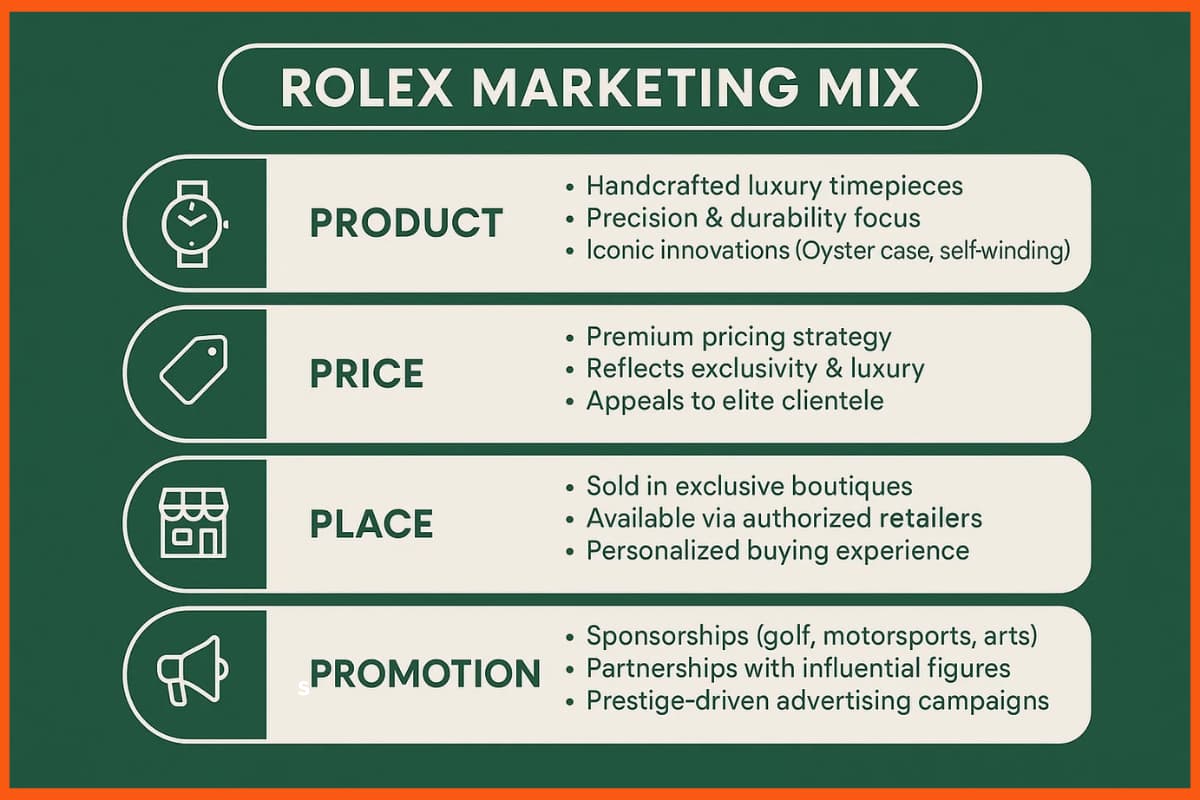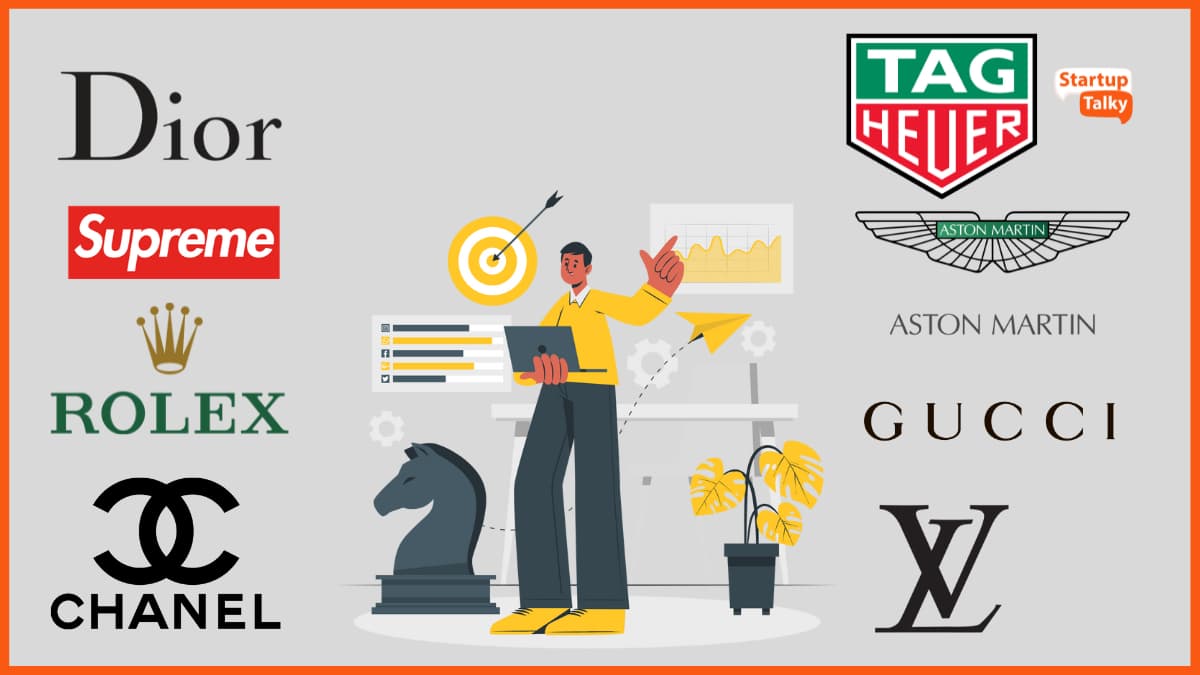Unrivaled. Iconic. Timeless. These words encapsulate the essence of Rolex, the epitome of luxury and precision in the world of horology. From its humble beginnings to its current position as an unrivaled global powerhouse, Rolex has redefined the art of timekeeping and established itself as the coveted crown jewel of watches.
Founded in 1905 by Hans Wilsdorf and Alfred Davis in London, Rolex embarked on a journey that would revolutionize the world of watchmaking. With an unwavering commitment to innovation and craftsmanship, Rolex quickly made its mark. In 1926, they introduced the world’s first waterproof wristwatch, the Oyster, and in 1931, they unveiled the groundbreaking perpetual self-winding mechanism, forever changing the way watches were powered.
As time ticked on, Rolex’s reputation soared. The brand’s prestigious timepieces adorned the wrists of pioneers, explorers, and visionaries, cementing its association with extraordinary achievements. From Sir Edmund Hillary conquering Mount Everest to James Cameron’s historic dive to the deepest part of the ocean, Rolex has accompanied adventurers in their quests for greatness.
The Rolex brand has not only conquered the hearts of adventurers but also captivated the global market. Its unwavering commitment to quality and precision has translated into remarkable sales figures, year after year. With a market share that has consistently outshone its competitors, Rolex has maintained its position as the undisputed leader in the luxury watch industry.
Today, Rolex stands tall as a symbol of prestige, precision, and timeless elegance. With its unparalleled heritage, unyielding commitment to quality, and visionary approach to innovation, Rolex continues to set the benchmark for luxury watches. In a world where time is the ultimate luxury, Rolex remains the ultimate timekeeper, embodying the enduring pursuit of perfection.
Rolex Target Market
Rolex Marketing Mix
Rolex Marketing Campaigns
Rolex Marketing Strategy
Rolex Target Market
In the realm of luxury timepieces, Rolex has established itself as the pinnacle of sophistication and prestige. Its timepieces are not merely watches; they are symbols of achievement and refinement. As such, Rolex’s target audience encompasses individuals who aspire to embody these qualities and seek to make a statement with their choice of wristwear.
Rolex appeals to both men and women who are at the apex of success and influence. They are typically affluent individuals who have achieved remarkable milestones in their careers and personal lives. Age-wise, the target audience ranges from discerning professionals in their 30s and 40s to seasoned connoisseurs and collectors in their 50s and beyond.
Rolex’s allure extends worldwide, transcending borders and cultures. From bustling metropolises to secluded destinations, Rolex enthusiasts can be found in every corner of the globe. Whether it’s the urban elite in New York City or the jet-setters in Monte Carlo, Rolex resonates with those who value timeless elegance and uncompromising quality.
Rolex’s target audience is not swayed by passing trends or fads. They seek enduring value and a timeless aesthetic that will stand the test of time. These individuals understand that a Rolex is more than a fashion accessory; it is an investment in a piece of horological history.
Rolex’s target audience consists of accomplished individuals who appreciate the epitome of luxury, craftsmanship, and exclusivity. They are global, discerning, and seek to make a statement with their choice of wristwear. Rolex’s timeless appeal and unwavering commitment to excellence ensure that it continues to captivate and resonate with this esteemed audience.

Rolex Marketing Mix
The Rolex marketing mix is a symphony of elegance, precision, and strategy that has positioned the brand as the unrivaled leader in the luxury watch industry. Every element of Rolex’s marketing approach is meticulously crafted to resonate with its target audience and uphold the brand’s esteemed reputation. From product development to pricing, promotion, and distribution, Rolex’s marketing mix exemplifies excellence in every facet, resulting in an enduring legacy that sets it apart from its competitors.

Rolex Product Strategy
At the heart of Rolex’s marketing mix is its exceptional product development. Each timepiece is a masterpiece of artistry and engineering, meticulously crafted to uphold the brand’s legacy of precision and durability. Its commitment to innovation is evident in its groundbreaking technologies, such as the Oyster case and perpetual self-winding mechanism, which have set industry standards.
Rolex Price Strategy
The brand positions itself as a symbol of exclusivity and luxury, reflected in its premium pricing. By maintaining a higher price point, Rolex enhances its desirability and caters to a discerning clientele that values craftsmanship, heritage, and the assurance of owning a genuine status symbol.
Rolex Place Strategy
Distribution is a vital component of Rolex’s marketing mix, ensuring that its timepieces are available in exclusive boutiques and authorized retailers worldwide. By carefully selecting retail partners and maintaining a controlled distribution network, Rolex upholds its commitment to exclusivity and a personalized customer experience.
Rolex Promotion Strategy
The brand employs a multi-faceted approach, leveraging various channels to communicate its message of prestige and timeless elegance. From high-profile sponsorships of prestigious events, such as golf tournaments and motorsports, to strategic partnerships with influential personalities, Rolex carefully crafts associations that align with its values of excellence and achievement.
The Rolex marketing mix is a symphony of excellence that has propelled the brand to unparalleled heights of success. Rolex continues to captivate the hearts and wrists of discerning individuals who seek not just a timepiece, but a symbol of enduring elegance and accomplishment.

Rolex Marketing Campaigns
Rolex has been renowned for its captivating and influential marketing campaigns that have left an indelible mark on the luxury watch industry. Here are two of their top campaigns:
The Spirit of Rolex
This campaign perfectly embodies the essence of Rolex as a brand. It celebrates extraordinary individuals who have pushed the boundaries of human achievement and showcases their stories of perseverance and success. The campaign features a diverse range of Rolex ambassadors, including athletes, explorers, and artists, who embody the values of determination, excellence, and precision. By associating the brand with these iconic figures, Rolex reinforces its commitment to excellence and positions itself as a symbol of accomplishment.
The Spirit of the Rolex
Perpetual
This campaign showcases Rolex’s innovative engineering and commitment to precision. The “Perpetual” campaign highlights the brand’s iconic self-winding movement, emphasizing the reliability and perpetual nature of Rolex timepieces. The campaign focuses on the intricate craftsmanship and attention to detail that go into every Rolex watch, captivating viewers with stunning visuals and narratives that highlight the brand’s heritage and technological prowess. By emphasizing the perpetual movement, Rolex solidifies its reputation as a pioneer in watchmaking and appeals to individuals who value both tradition and innovation.
These campaigns exemplify Rolex’s ability to create compelling narratives that resonate with its target audience. By associating the brand with exceptional individuals and emphasizing the timeless elegance and precision of its timepieces, Rolex’s marketing campaigns consistently captivate and inspire watch enthusiasts around the world.
Rolex Marketing Strategy
Rolex, the epitome of luxury and precision in the world of watches, has built its empire on a foundation of impeccable marketing strategies. With a keen understanding of its target audience and a commitment to excellence, Rolex has consistently implemented bold and innovative tactics that have propelled the brand to unparalleled heights. Let’s explore Rolex’s top marketing strategies that have contributed to its enduring success.
Cultivating an Aura of Exclusivity
Rolex has masterfully positioned itself as a symbol of prestige and exclusivity. By carefully controlling its distribution channels and limiting the number of authorized retailers, Rolex creates an air of scarcity and luxury, making its timepieces highly coveted and aspirational.
Partnerships with Influential Figures
Rolex strategically aligns itself with influential personalities who embody the values of achievement and excellence. From sporting legends to renowned artists and explorers, these ambassadors not only showcase Rolex’s timepieces but also serve as living embodiments of the brand’s ideals.
Sponsorship of Prestigious Events
By sponsoring high-profile events such as the Wimbledon tennis tournament, the Rolex 24 at Daytona, and the Rolex Sydney Hobart Yacht Race, the brand associates itself with the pinnacle of performance and success. This sponsorship strategy helps Rolex reinforce its position as the watch of choice for those who thrive on pushing boundaries.

Crafting Compelling Storytelling
Rolex understands the power of storytelling in captivating its audience. Through captivating narratives, the brand highlights the exceptional achievements of individuals who wear Rolex timepieces, emphasizing the brand’s connection to remarkable moments and inspiring journeys.
Brand Heritage and Prestige
Rolex proudly shares its long history and big achievements in watchmaking. The famous Oyster, the world’s first waterproof wristwatch, shows how Rolex has always led with innovation and skill. Over the years, the brand has become a symbol of trust, class, and timeless style. Wearing a Rolex is like carrying a piece of history on your wrist.
Consistency in Messaging and Design
Rolex has established an unmistakable brand identity through consistent messaging and iconic design elements. The brand’s distinctive crown logo, classic aesthetics, and timeless elegance are instantly recognizable, allowing Rolex to maintain a strong and cohesive brand image across all its marketing efforts.
Leveraging Digital Platforms
While rooted in tradition, Rolex has embraced digital marketing strategies to reach a wider audience. The brand utilizes social media platforms, engaging content, and immersive digital experiences to connect with both existing and potential customers, adapting its marketing efforts to the changing landscape of consumer engagement.
Conclusion
Rolex’s marketing strategies have played a pivotal role in solidifying its status as the unrivaled leader in the luxury watch industry. Rolex continues to captivate the hearts and minds of discerning individuals worldwide. By consistently delivering excellence and appealing to the aspirations of its target audience, Rolex ensures that its iconic timepieces remain coveted symbols of achievement and timeless elegance.
In a world where marketing plays a critical role in brand success, Rolex stands as a shining example of how to create a lasting impact. Rolex’s unwavering commitment to excellence, precision, and innovation serves as a reminder that successful marketing goes beyond mere promotion-it is about creating an emotional connection, fostering aspiration, and embodying the values that resonate with consumers. So, let the story of Rolex’s marketing prowess be an inspiration and a call to action for marketers and start-ups to learn, adapt, and craft their own remarkable journeys to success. The time is now to make your mark in the world of marketing.
FAQs
Who is Rolex target audience?
Rolex appeals to both men and women who are at the apex of success and influence. They are typically affluent individuals who have achieved remarkable milestones in their careers and personal lives. Age-wise, the target audience ranges from discerning professionals in their 30s and 40s to seasoned connoisseurs and collectors in their 50s and beyond.
What are the marketing strategies followed by Rolex?
Here are the top marketing strategies of Rolex that have contributed to its enduring success –
- Cultivating an Aura of Exclusivity
- Partnerships with Influential Figures
- Sponsorship of Prestigious Events
- Crafting Compelling Storytelling
- Consistency in Messaging and Design
- Leveraging Digital Platforms
What is Rolex brand strategy?
Rolex’s brand strategy focuses on luxury, exclusivity, and timeless prestige. By keeping production limited and pricing premium, it creates strong demand and positions itself as a global status symbol. The brand builds trust through its rich heritage, innovation in watchmaking, and carefully chosen sponsorships that reflect excellence and achievement.
What is Rolex advertising strategy?
Rolex’s advertising strategy centers on prestige, highlighting heritage, innovation, and success through elite sponsorships, influential ambassadors, and luxury-focused storytelling.
What is Rolex brand value?
According to Morgan Stanley and LuxeConsult, Rolex generated approximately CHF 10.58 billion in revenue in 2024, representing around 30% of the Swiss watch industry’s total revenue.














